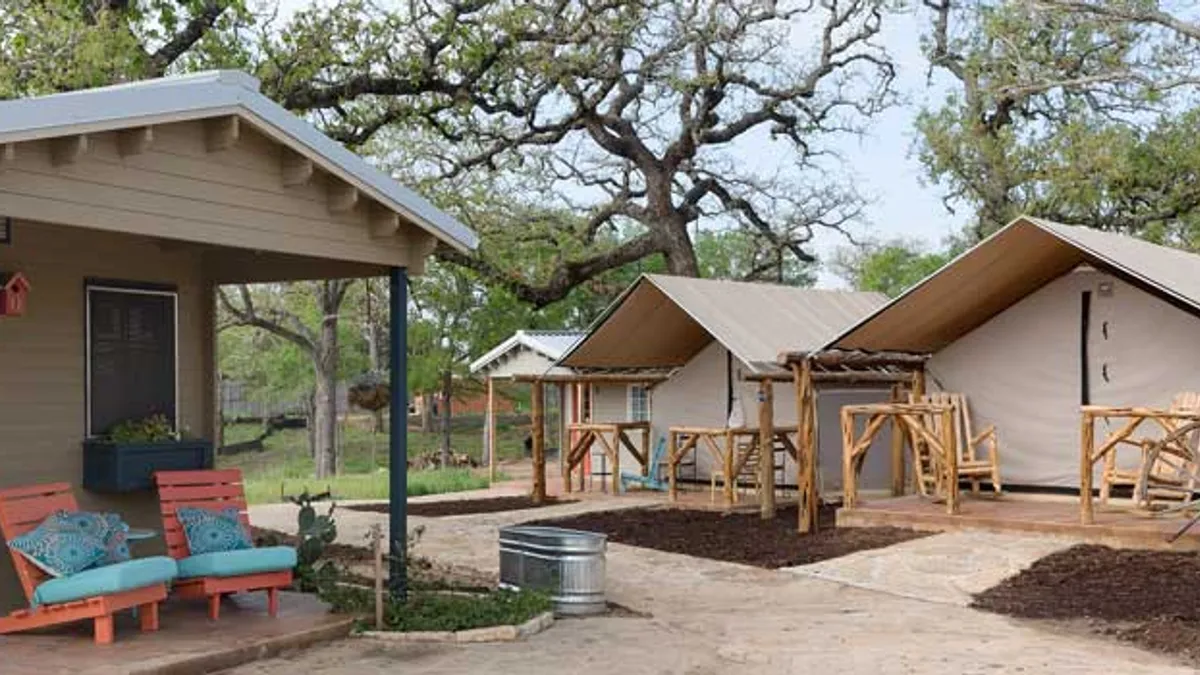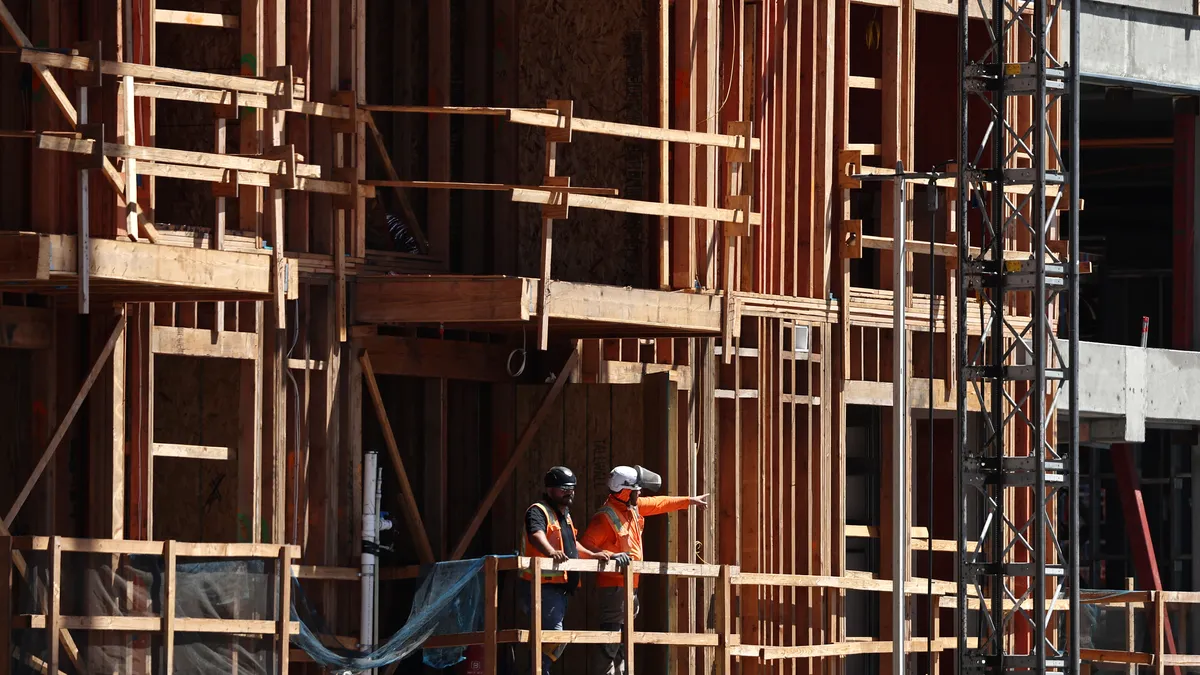Dive Brief:
- Alan Graham, the CEO of nonprofit group Mobile Loaves & Fishes, plans to raise $60 million to expand Community First Village, a tiny house community in Austin, TX that provides permanent affordable housing for chronically homeless people, according to Curbed Austin and others. The initiative is part of a 10-year plan to mitigate homelessness.
- The 27-acre village will hit its 200-person capacity next year. The nonprofit already has purchased an additional 24 adjacent acres which will allow for the construction of another 350 homes. Ultimately, it would like to provide 1,000 new microhomes and RVs to chronically homeless individuals.
- Groundbreaking for the expansion is expected sometime next year.
Dive Insight:
Mobile Loaves & Fishes' efforts coincide with the city of Austin's new push to curb homelessness. Over the summer Mayor Steve Adler proposed additional tourist taxes — a significant one being a 2% increase in the hotel tax — that would help to pay for housing for the city's homeless. City employees also partnered with the police and community groups this summer and fall for two phases of a program designed to collect data and cut down on homeless shelter overcrowding, get homeless individuals into long-term housing and cut down on crime.
The Mobile Loaves & Fishes 10-year plan also aims to establish a commissary downtown that would give homeless people the opportunity to earn income by selling items like food and drinks rather than panhandling. The commissary would allow workers to learn entrepreneurial skills while earning a dignified income. The idea is part of a holistic approach to curbing homelessness — focusing on solving the problems, like underemployment, that cause homelessness rather than simply providing housing. More cities are trying the holistic approach and finding success.
Residents began moving into Community First Village two years ago and rent is $225 a month. Offering tiny houses for people experiencing chronic homelessness embraces another holistic approach: "housing first," which gets people into stable, permanent housing without preconditions such as employment and sobriety. In a sense, it's an extreme affordable housing program because residents still pay rent, just at a greatly reduced price. It recognizes that about 40% of homeless people have some income but not enough to afford permanent housing at market prices.
The combination of the tiny houses and commissary plan creates a multi-faceted approach to get homeless people back on their feet and into a more stable housing and working environment. Using a holistic approach seems to be working — Graham reports that officials have noticed residents at Community First Village are receiving fewer crime citations and going to the hospital less often than before they moved there.











